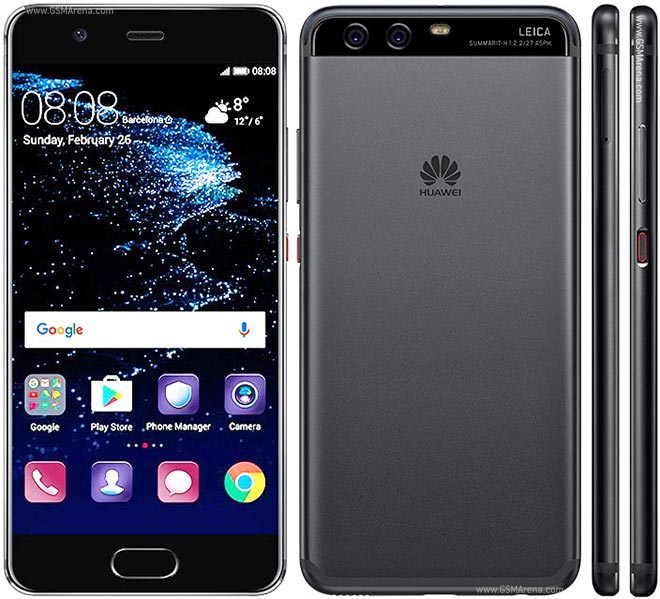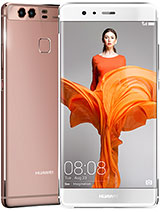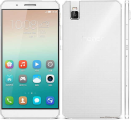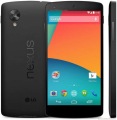
Huawei P10 64 GB Prices
Important Note.
- All prices are in Pakistani Rupee (PKR)
- Prices may vary at stores and our effort will be to provide you with the updated prices.
- The latest price of Huawei P10 64 GB was obtained on 17 مئی, 2019. The prices at the original stores had been updated on the respective mentioned dates.
- Find out WhatMobile price has dropped in Pakistan by selecting Notify Price Drop button
- Find out WhatMobile has better specifications by clicking Add To Compare Button find out what Mobile has better reviews by visiting our reviews section
- Find out WhatMobile is cheaper on which retailer by clicking Compare prices from retailers button
Search Terms
- Huawei P10 64 GB
Specifications
| GENERAL | |
| 2G Network | GSM 850 / 900 / 1800 / 1900 - SIM 1 & SIM 2 (dual-SIM model only) |
|---|---|
| 3G Network | HSDPA 850 / 900 / 1700(AWS) / 1900 / 2100 HSDPA 800 / 850 / 900 / 1700(AWS) / 1800 / 1900 / 2100 |
| 4G Network | LTE band 1(2100), 3(1800), 4(1700/2100), 7(2600), 20(800), 38(2600), 39(1900), 40(2300), B41 LTE band 1(2100), 2(1900), 3(1800), 4(1700/2100), 5(850), 6(900), 7(2600), 8(900), 12(700), 17(700), 18(800), 19(800), 20(800), 26(850), 38(2600), 39(1900), 40(2300), B41 |
| Sim | Single SIM (Nano-SIM) or Hybrid Dual SIM (Nano-SIM, dual stand-by) |
| Announced | 22/02/2017 |
| Status | Available. Released 2017, March |
| BODY | |
| Dimensions | 145.3 x 69.3 x 7 mm (5.72 x 2.73 x 0.28 in) |
| Weight | 145 g (5.11 oz) |
| DISPLAY | |
| Display Size | 5.1 inches, 71.7 cm2 (~71.2% screen-to-body ratio) |
| Resolution | 1080 x 1920 pixels, 16:9 ratio (~432 ppi density) |
| MultiTouch | Yes |
| Protection | Corning Gorilla Glass 5 - Emotion UI 5.1 |
| SOUND | |
| AlertTypes | Vibration; MP3, WAV ringtones |
| LoudSpeaker | Yes |
| 3.5mm jack | Yes - 24-bit/192kHz audio - Active noise cancellation with dedicated mic |
| MEMORY | |
| CardSlot | microSD, up to 256 GB (uses SIM 2 slot) |
| Internal | 64 GB, 4 GB RAM |
| DATA | |
| GPRS | Yes |
| EDGE | Yes |
| Speed | HSPA, LTE |
| WLAN | Wi-Fi 802.11 a/b/g/n/ac, dual-band, DLNA, WiFi Direct, hotspot |
| Blue Tooth | 4.2, A2DP, LE |
| NFC | Yes |
| USB | 2.0, Type-C 1.0 reversible connector |
| CAMERA | |
| Camera Primary | Dual: 12 MP (f/2.2, PDAF, OIS) + 20 MP, Leica optics, 2x lossless zoom, phase detection and laser autofocus, dual-LED dual-tone flash |
| Camera Features | Geo-tagging, touch focus, face detection, HDR, panorama |
| CameraVideo | 2160p@30fps, 1080p@60fps |
| CameraSecondary | 8 MP, f/1.9 |
| FEATURES | |
| Processor Cores | Octa-Core |
| OS | Android 7.0 (Nougat), planned upgrade to Android 8.0 (Oreo) |
| CPU | Octa-core (4x2.4 GHz Cortex-A73 & 4x1.8 GHz Cortex-A53) |
| Sensors | Fingerprint (front-mounted), accelerometer, gyro, proximity, compass |
| Messaging | SMS(threaded view), MMS, Email, Push Mail, IM |
| Browser | HTML5 |
| Radio | No |
| GPS | Yes, with A-GPS, GLONASS, BDS, GALILEO |
| Colors | Mystic Silver, Rose Gold, Graphite Black, Dazzling Gold, Dazzling Blue, Greenery |
| Others | - Fast battery charging - XviD/MP4/H.265 player - MP3/eAAC+/WAV/Flac player - Document viewer - Photo/video editor |
| BATTERY | |
| Battery | Non-removable Li-Ion 3200 mAh battery |
| MISC | |
Reviews
06/04/2017 - 5:51pm
Huawei has grown up a lot in recent years. Back in the day, the company had an air of inferiority about it when compared to its more established peers but all that has changed in the past few years after a series of consistently impressive releases.
Back in the day, Huawei was rubbing shoulders with the likes of Alcatel and Asus in the phone space. In 2017 it is giving brands like Apple and Samsung pause for thought after years of consistent, solid growth both here and its native China.
The Huawei P9 received favourable reviews last year and now the company is back with its follow-up, the Huawei P10. I’ve just spent a month using the phone, getting to grips with its finer points, and testing out its Leica camera.
Is it a worthy update? Should you get the Huawei P10 over the Galaxy S8? Or is this one you should avoid? At the end of this review, you will have a better understanding of what this phone is all about and whether or not you should buy it.
Let’s do this.
Huawei P10 Review: Design
If you used the Huawei P9, the P10 is not a big step forward with respect to design and aesthetics. The Huawei P10 looks very similar, a little too similar for my liking, though it is still a very attractive handset.
Huawei has “borrowed” heavily from Apple’s iPhone 6 and iPhone 7 when designing this handset. The overall shape, styling and finish is all very “iPhone” – not that this is anything new. The P9 did exactly the same thing.
But who cares, right? If it looks good, why should any of us care. And the Huawei P10 certainly looks good, albeit rather similar to last year’s P9. The handset’s build materials look and feel ultra-premium; zero corners have been cut here.
And in order to make sure things stay that way, Huawei kindly includes a free case for the Huawei P10 inside the box. The case – at least, the one I was sent for review – is a clear sleeve that hugs the handset perfectly. Importantly, though, it doesn’t hide away the phone’s styling and curves.
The Huawei P10 is a smart-looking handset too. Very sharp. My review unit was white/silver and it looks great. It’s also very well proportioned for one-handed use, much like Apple’s iPhone 7 and iPhone 6s models which I think is the target demographic of this handset.
Thing is: you can’t just pick up floating Apple fans by making a handset that looks like their current phone. Samsung figured this out a couple of years ago and started “out-designing” Apple in order to steal its users. I think Huawei needs to do the same, as this phone feels too close to the iPhone.
The handset is pretty, smart and well put together, there’s no denying that, but it just doesn’t feel like Huawei’s really pushed itself in the design department. Instead of hitting the ground running off the back of last year’s successes with something fresh and new, Huawei has, quite literally, “done an Apple” (translation: re-used the outgoing flagship’s design and updated the specs).
I believe Huawei can do a lot better. And I think they will in the coming months and years. For whatever reason, Huawei played it very safe this time around and I think that was a mistake.
Nothing about this phone is eye-catching; nothing makes you want to reach out and use it. And that sucks because Huawei can design the crap out of a phone when it wants to. Just look at the Nexus 6P and the Huawei Mate 8 and Mate 9.
For some crazy reason Huawei has decided to add a big, finger print sensor/ Home button on the front of the handset. Why is this odd? Simple: because it acts as the Return Home and back button as well as a finger print sensor, despite both of these keys ALSO being available on the P10’s display.
Why both, Huawei? It doesn’t make any sense. It just seems wasteful to have the Home key on the front for this express purpose alone, unless Huawei knows something I don’t about consumer preference for finger print sensor placement?
Why not just remove the Home button completely, plop the fingerprint scanner on the back, then you could thin down the bezels and make the front of the handset ALL about about the display and then, all of a sudden, you’ve got yourself a flagship that looks nothing like the Huawei P9 or the iPhone 7.
Huawei P10 Review: Software
On first inspection, Huawei’s EMUI appears to resemble a dog’s dinner. It looks cheap, is full of rubbish you will never use and it doesn’t have an app draw (new apps simply appear on one your home screens), which kind of begs the question: who in the hell signed off on this!?
Dig a little deeper, however, and you will find some positives, things that make EMUI a lot more palatable and, in some instances, actually rather useful. The first thing you need to do is change the theme and install a nice, eye-catching wallpaper; once you’ve done this things start to look a bit better. Next, you’ll want to remove all the bloatware apps from the home screens and then add in the option to have an app tray icon (rather than just home screens).
Huawei has integrated some pretty clever machine learning into the software that powers EMUI. This machine learning aspect learns which applications you use most and places them in favourable positions on the homescreen; it also manages power in a smarter fashion which translates into better power management.
You also get the AWESOME Twin feature, which lets you run two WhatsApp and Facebook accounts at the same time. This is excellent for people that have a personal and business WhatsApp and Facebook. I have never come across this before, but it is a brilliant feature and I have no idea why other phone makers aren’t using it!
There’s tons of other cool stuff inside – a large, expansive drop down Settings menu, Ultra Battery Mode, and even built in Screen Recording – but the one a lot of people have been waiting for is split screen multitasking, which is now present and accounted for inside EMUI. It works great too, with the Kirin CPU taking everything in its stride. I used it multiple times throughout my testing period and never had any issues.
All too often I find myself making knee jerk reactions based on how things look or, in this context, appear to look. I see other reviewers doing the same, writing off things like EMUI as nothing but an exercise in bloatware, but once you take the time to dig a little deeper and make use of its customisation options you will find and entire universe of possibilities.
My only REAL issue with EMUI is that Huawei has tried to cram in far too many applications. You could easily get rid of 80% of them and the software would still be just as good, as most of its USPs are features built into the system OS (not standalone applications), and some of these USPs – built in screen recording, for instance – are truly impressive.
I also think the look and feel of EMUI would benefit from a redesign; the look and feel of the app icons just doesn’t sit well with me. I like the way stock Android looks. But what I would love is if Huawei took all of EMUI’s best parts and merged them with a stock-looking build of Android.
Huawei P10 Review: Specs & Performance
Huawei P10 Key Specs:
- Display: 5.1in 1080p LCD panel
- Cameras: Dual 20 MP + 12 MP, f/2.2, OIS, Leica optics
- Software: Android Nougat (With EMUI)
- RAM: 4GB
- CPU: HiSilicon Kirin 960 (4x2.4 GHz Cortex-A73 & 4x1.8 GHz Cortex-A53)
- Storage: 32/64GB + SD-support (256GB)
- Battery: 3200mAh
The specs and hardware inside the Huawei P10, as ever, are on point. The company’s own-brand Kirin CPU has proven itself time and time again as a viable alternative to Qualcomm’s Snapdragon setup, holding its own with respect to almost every task you could wish to perform.
The handset is snappy, the camera operates brilliantly and there is zero lag, even when you’re pushing the handset really hard. Gaming, browsing, videos – the Kirin CPU takes everything in its stride. But performance has never been an issue for Huawei (or, most high-end phones for the past couple of years for that matter).
No, the problem here is finding someone who would buy this phone over the Samsung Galaxy S8, the iPhone 7, the LG G6 or the Google Pixel. If someone asked my what phone they should upgrade to in 2017, the P10, while decent enough on paper and in practice, wouldn’t even make my top five.
If it were cheaper, this would change. But Huawei is asking for a lot of money for this handset and with strong release from Samsung, LG and Google – and Apple in a few months – it is really hard to see where this phone, which doesn’t really offer anything all that exceptional, fits in.
In a world of super-high-powered-well-designed Android phones, the Huawei P10 feels adequate at best. In this sense, it reminds me of Apple’s iPhone 7; it’s decent enough but compared to competition (including iPhone 7 Plus) it just feels like rehash update that very little thought went into.
And this type of handset (unless you’re Apple, of course) stands very little chance of trumping the likes of Samsung, LG, OnePlus and Google, which are more established and, overall, better, more accomplished phones. It’s really that simple: this phone is good; but good REALLY doesn’t cut it anymore – not by a long shot.
Huawei P10 Review: Camera
The Huawei P10’s biggest USP is its camera; this is really what this phone is all about. Huawei has made this phone for people that take photography on their phones very seriously.
Like the P9’s shooter, the Huawei P10’s is a Leica-branded setup. It is also still a dual-lens camera, only this time Huawei has paired a 12MP sensor with a 20MP monochrome unit behind f/2.2 lenses. Results right off the bat are immensely impressive.
But first let’s look at why Huawei chose this camera setup in the first place. The decision to use a monochrome unit alongside a normal one, according to Huawei, is for more detail in images; the monochrome sensor produces unparalleled black and white shots and, when combined with the normal sensor, adds in tons of additional detail to colour shots.
The other brilliant thing about the Huawei P10’s camera is the application itself and its awesome software, which, more than any other phone I have tested in recent history, really puts you in charge of what you’re attempting to capture. Swipe up from the shutter button to access Pro mode, where you can lock in ISO, change the shutter speed and alter the balance of the shot.
Plenty of Android phones offer Pro mode, but I especially like the way it is integrated here. I just wish the same designers that built this app were used on the rest of the P10’s software!
There’s also a myriad of effects and “shooting styles”, like night shots or, if you’re a foodie, taking a picture of a meal. Night shot, for instance, combines a bunch of exposures and parameters into a single shot in order to create a more detailed, well balanced image.
Used in conjunction with a tripod, you can capture some utterly stunning images with the Huawei P10. Especially when shooting in black and white. The camera is easily the best thing about this handset. But whether this alone is enough to persuade anyone to buy it remains to be seen?
Overall image quality, in general, is up there with the Pixel, iPhone 7 and Galaxy S8 but the rest of the phone isn’t and that fact alone will give plenty of potential customers pause for thought when eyeing this handset up.
Huawei P10 Review: Battery
With moderate to heavy use the P10 will handle a full day of use. In my experience, the only thing that really degrades battery life, like most things, is lots of video and when using it for navigation on extended drives.
It’s worse than the Pixel and Galaxy S8, but likely on a par with the iPhone 7 for overall performance. Again, this is an area where Huawei could have tried to push things further; why not make the phone thicker and add in a bigger cell and push for best overall battery performance?
The Mate 8 was exceptional in this regard; so good, in fact, that battery life, alongside its decent overall styling, performance and imaging capabilities, made it an easy recommendation. With the P10, things are distinctly more average and this, obviously, makes it harder to recommend. Even more so given the handsets that it is up against.
Huawei P10 Review: Verdict
In its own right the Huawei P10 is a solid piece of kit across the board, both in terms of looks and specs. But once you start looking at other handsets – the iPhone 7 Plus, the Google Pixel, the LG G6, the OnePlus 3T, the Galaxy S8 – things start to fall apart quickly. And a good camera alone cannot change this.
I did really enjoy my time with the Huawei P10. Way more than I thought I would. It does everything well and looks and feels nice in the process. But the real question I have to ask myself is this: would I choose THIS phone over an iPhone, the Galaxy S8, Google Pixel or OnePlus 3T?
The answer is no – I would get all of those handsets in front of the P10.
Had the Huawei P10 retailed for the same price as the OnePlus 3T it would almost certainly be a KILLER phone. In fact, this is exactly what Huawei has just done with its latest Honor release – the Honor Pro – which looks and sounds very impressive.
In this bracket the Huawei P10 (if we forget the Honor Pro) wouldn’t just be a contender, it’d be the king. It has all the hallmarks of a brilliant phone and, in its defence, it does have moments of greatness. But up against LG, Samsung and Apple, the P10 will always fall short. Not in any real, tangible way but because given the choice I don’t know anyone that would choose the P10 over the LG G6, Galaxy S8 or OnePlus 3T.
Write Your Own Review
My Recent Reviews
- Be first to post review for this product.
comments powered by Disqus















.jpg)


.jpg)
.jpg)
-16-GB.jpg)

-32-GB.jpg)













